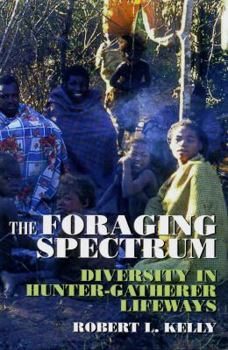Foraging Spectrum PB: Diversity in Hunter-Gatherer Lifeways
Select Format
Select Condition 
Book Overview
The author wrote this book primarily for his archaeology students, to show them how dangerous anthropological analogy is and how variable the actual practices of foragers of the recent past and today are. His survey of anthropological literature points to differences in foraging societies' patterns of diet, mobility, sharing, land tenure, exchange, gender relations, division of labour, marriage, descent and political organisation. By considering the actual, not imagined, reasons behind diverse behaviour this book argues for a revision of many archaeological models of prehistory. From the reviews "[A]n excellent overview of key issues in hunter-gatherer studies." Alan Barnard in American Ethnologist "Not since Man the Hunter has there been such a synthesis and such a mix of stimulating ideas. This will be the authoritative work on hunter/gatherers for a good number of years." Brian Hayden in Canadian Journal of Archaeology "[A]uthoritative, comprehensive, and highly readable. . . . A well-worn and heavily annotated copy should be the companion of anyone claiming an interest or expertise in present or past hunter-gatherers." Bruce Winterhalder in American Antiquity Prepublication praise "The Foraging Spectrum [is] a well-written, scrupulously researched synthesis of modern approaches to foraging behavior, both past and present." David Hurst Thomas, American Museum of Natural History "A tour de force of scholarship in behavioral ecology." Mathias Guenther, Wilfred Laurier University
Format:Paperback
Language:English
ISBN:0975273884
ISBN13:9780975273883
Release Date:November 2007
Publisher:Eliot Werner Publications/Percheron Press
Length:446 Pages
Weight:1.64 lbs.
Dimensions:1.1" x 6.0" x 8.8"
Customer Reviews
3 ratings
Good Textbook for the Lazy Professor
Published by Thriftbooks.com User , 15 years ago
A fairly easy read, but dense. Not for a undergraduate student class. A lazy professor who wants to stimulate discussion with their graduate students would like this book.
Still the best book in its field
Published by Thriftbooks.com User , 18 years ago
This book was written a decade ago, but nothing has come along yet to replace it. If you were to read a single book on the way that foragers live and have lived, this synthesis of the vast ethnographic literature would be an excellent choice. Kelly is keen to show that foraging peoples are quite diverse, a useful perspective for those of us who tend unconsciously to focus on the traits common to all foragers. By the end of the book, one has some sense of the range of possibilities for foraging societies, and a more sophisticated appreciation of the ways in which our paleolithic ancestors lived.
The empirical nature of subsistence patterns
Published by Thriftbooks.com User , 26 years ago
are examined very succinctly in this text. Beginning students of hunting and foraging behaviors will realize that the answer to the question "what do we eat?" is not an arbitrary cultural choice, but is instead both measurable and predictable. According to The Foraging Spectrum, such predictions are based on geographical area, climatology, and primary production, to name a few.






